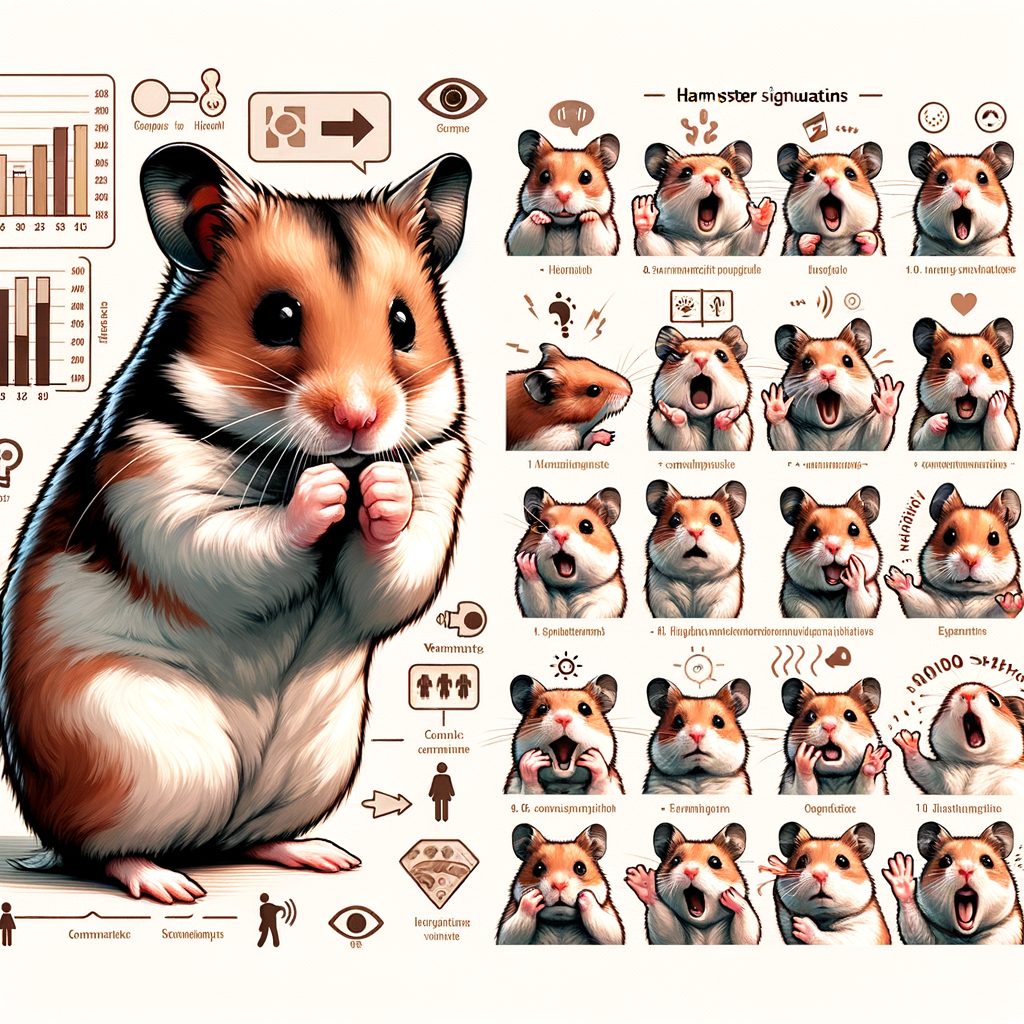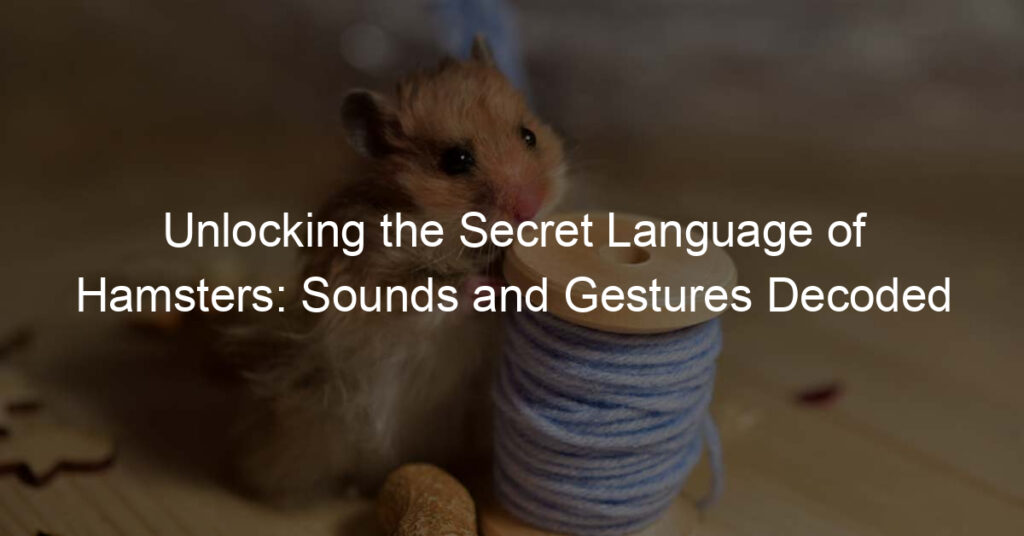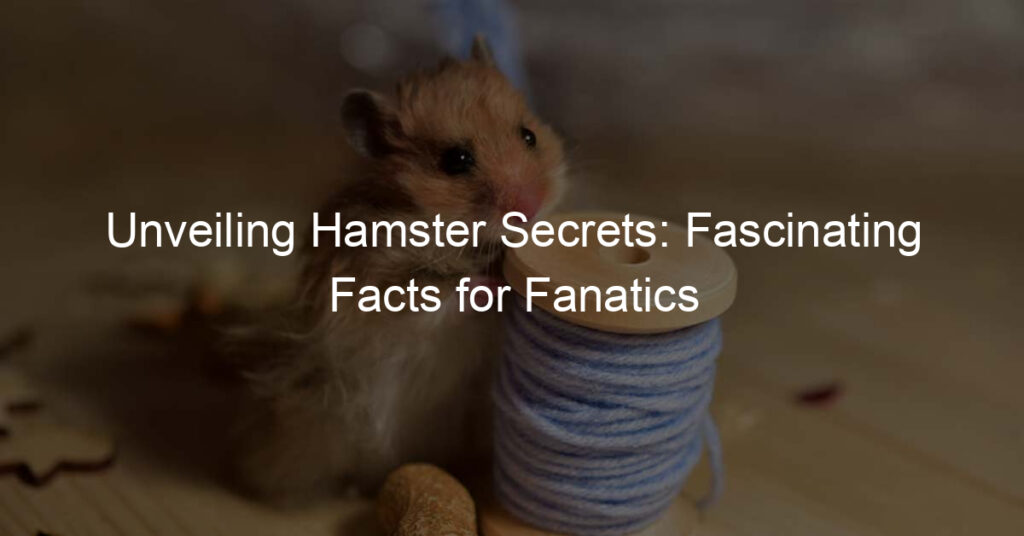
Introduction to Hamster Behavior
Hamsters are small, cute, and playful creatures that make great pets. However, to ensure their happiness and well-being, it’s essential to understand their behavior. This article will help you comprehend the importance of hamster behavior, provide an overview of common behaviors, and explain why understanding these behaviors is crucial for pet owners.
- Understanding the Importance of Hamster Behavior
- Overview of Common Hamster Behaviors
- Running on the wheel: Hamsters are active animals and need plenty of exercise. Running on the wheel is a common behavior that helps them burn off energy.
- Grooming: Hamsters are clean animals and spend a significant amount of time grooming themselves. This behavior is a sign of a healthy and content hamster.
- Hoarding: Hamsters have a natural instinct to hoard food. This behavior is a survival instinct from their wild ancestors, who needed to store food for times of scarcity.
- Why Understanding Hamster Behavior is Crucial for Pet Owners
Hamsters, like all animals, communicate through their behavior. They express their feelings, needs, and fears through various actions and sounds. Understanding these behaviors can help you provide a better environment for your pet, ensuring they are happy, healthy, and comfortable. For instance, a hamster running on its wheel more than usual might be a sign of stress, while a hamster grooming itself frequently could indicate contentment.
There are several common behaviors that hamsters exhibit. These include:
Understanding your hamster’s behavior is crucial for several reasons. Firstly, it can help you identify any potential health issues early on. For example, a hamster that is not eating or drinking might be sick. Secondly, understanding your hamster’s behavior can help you provide a better environment for them, ensuring they are happy and comfortable. Finally, it can enhance your bond with your pet, as understanding their behavior can lead to better communication and interaction.
In the following sections, we will delve deeper into understanding hamster sounds and gestures, and how you can decode their communication. So, stay tuned!
Understanding Hamster Sounds
Hamsters, like all animals, have their unique way of communicating. They use a variety of sounds to express their feelings and needs. Understanding these sounds can help us better care for our little friends.
Decoding Hamster Vocalizations
Hamster vocalizations can be quite complex. They can range from soft squeaks to loud chatters. Let’s explore the most common hamster sounds and what they mean.
- Common hamster vocalizations and their meanings
- Interpreting hamster sounds: case studies
Hamsters make a variety of sounds, each with its unique meaning. Here are some common hamster vocalizations and their interpretations:
| Sound | Meaning |
|---|---|
| Squeaking | Hamsters often squeak when they are happy or excited. However, loud and continuous squeaking could indicate stress or fear. |
| Chattering | Chattering is a sign of contentment. If your hamster is chattering while eating or exploring, it’s a sign they are enjoying themselves. |
| Hissing | Hissing is a warning sound. It usually means the hamster is scared or irritated and wants to be left alone. |
Understanding hamster sounds is not just about knowing their meanings. It’s also about interpreting these sounds in context. Let’s look at a couple of case studies to illustrate this.
Case Study 1: Squeaking during playtime
Lily, a Syrian hamster, often squeaks during playtime. Her owner, noticing the squeaks, decided to observe her closely. Lily was active, eating well, and showed no signs of stress or fear. Hence, the owner concluded that Lily’s squeaking was a sign of happiness and excitement.
Case Study 2: Hissing when approached
Max, a Roborovski hamster, started hissing whenever his owner tried to pick him up. The owner noticed that Max was otherwise behaving normally. After giving Max some space and time, the hissing stopped. The owner realized that Max was feeling threatened and needed some alone time.
Understanding your hamster’s sounds can greatly enhance your bond with them. It allows you to meet their needs and ensure they are happy and comfortable. Remember, each hamster is unique, and their sounds can vary. So, take the time to observe and understand your furry friend.
Hamster Sound Meanings
Hamsters, like all animals, have their unique language. They communicate their feelings and needs through a variety of sounds. Understanding these sounds can help you better care for your furry friend.
- Understanding the different types of hamster sounds
- Examples of hamster sound meanings
- If your hamster is squeaking while you’re holding them, they might be uncomfortable. Try adjusting your grip or putting them back in their cage.
- If your hamster is chirping while running on their wheel, they’re probably having a great time!
- If your hamster hisses when you approach their cage, they might be scared or upset. Give them some time to calm down before trying to interact with them again.
Hamsters make several types of sounds, each with its own meaning. Here are a few common ones:
| Sound | Meaning |
|---|---|
| Chirping | Hamsters chirp when they are excited or happy. It’s a positive sound that indicates your hamster is in a good mood. |
| Squeaking | This sound can mean a few different things. It could be a sign of fear, discomfort, or a way to get your attention. |
| Hissing | Hissing is a warning sound. If your hamster is hissing, it’s best to give them some space. |
These are just a few examples. Remember, every hamster is unique and may have its own variations of these sounds.
Let’s look at some examples to better understand hamster sounds:
Understanding your hamster’s sounds is a key part of caring for them. By paying attention to their vocalizations, you can ensure they’re happy, comfortable, and well-cared for.
Understanding Hamster Gestures
Hamsters, like all animals, have their unique way of communicating. They use a variety of gestures to express their feelings and intentions. By understanding these gestures, you can better understand your hamster’s needs and moods.
Decoding Hamster Body Language
Decoding hamster body language can seem like a daunting task, but with a little observation and understanding, it can become second nature. Let’s delve into some of the most common hamster gestures and what they mean.
- Common hamster gestures and their meanings
Hamsters communicate a lot through their body language. Here are some common gestures and what they mean:
| Gesture | Meaning |
|---|---|
| Standing on Hind Legs | This is a sign of curiosity. Your hamster might be trying to get a better view of its surroundings. |
| Grooming | Hamsters groom themselves when they are relaxed and comfortable. |
| Flattening Body | If your hamster flattens its body, it might be feeling threatened or scared. |
- Interpreting hamster body language: case studies
Let’s look at a couple of case studies to better understand hamster body language:
Case Study 1: Daisy, a Syrian hamster, was observed standing on her hind legs whenever her owner approached the cage. This was interpreted as Daisy being curious about her owner’s actions.
Case Study 2: Max, a dwarf hamster, was often seen grooming himself. His owner noticed that Max usually did this after being handled, indicating that Max was comfortable with his owner.
These case studies show that understanding your hamster’s body language can help you better meet their needs and ensure their happiness.
Hamster Communication Signals
Hamsters communicate in a variety of ways, and understanding these signals can help us to better care for these delightful pets. Let’s delve into the different types of hamster gestures and explore some examples of hamster communication signals.
- Understanding the different types of hamster gestures
- Examples of hamster communication signals
Hamsters use a range of gestures to communicate with their human caregivers and other hamsters. These gestures can be broadly categorized into friendly, aggressive, and fearful signals.
Friendly signals include grooming, sniffing, and following each other. These behaviors suggest that your hamster is comfortable and happy.
Aggressive signals include standing on hind legs with front paws extended, teeth chattering, and hissing. These are clear signs that your hamster is feeling threatened or annoyed.
Fearful signals include freezing, hiding, and squeaking. These behaviors indicate that your hamster is scared or anxious.
Let’s look at some specific examples of hamster communication signals:
| Gesture | Meaning |
|---|---|
| Chewing on cage bars | This often means your hamster is bored and needs more stimulation. |
| Running in circles | This could indicate excitement or stress. Pay attention to other signals to determine which it is. |
| Standing on hind legs | Your hamster is curious and exploring its surroundings. |
| Rolling over | This is a sign of submission, often seen when two hamsters are interacting. |
Understanding your hamster’s communication signals can greatly enhance your bond with your pet and ensure its well-being. Remember, each hamster is unique, and what holds true for one may not be the same for another. Always observe your pet’s behavior closely and respond with care and respect.
Key Takeaways: Decoding Hamster Communication
Understanding the unique language of hamsters can transform your relationship with your pet. It can help you provide better care, respond to their needs, and create a more harmonious living environment. Here are the key takeaways from our exploration of hamster communication.
- Importance of Understanding Hamster Sounds and Gestures
- Practical Tips for Interpreting Hamster Sounds and Gestures
- How Understanding Hamster Communication Can Improve Pet Care
Hamsters communicate primarily through sounds and gestures. By understanding these, you can better interpret their needs, moods, and health conditions. For instance, a series of high-pitched squeaks might indicate fear or distress, while a relaxed grooming behavior suggests contentment. Understanding these signals can help you respond appropriately and ensure your hamster’s well-being.
Observation is key to understanding your hamster’s communication. Spend time watching your hamster and note any recurring sounds or behaviors. You might notice that certain sounds accompany specific activities or moods. For example, a low rumbling sound might indicate annoyance, while a series of rapid squeaks could mean excitement. Remember, each hamster is unique, so what works for one might not work for another.
By decoding your hamster’s communication, you can provide more personalized care. You’ll be able to understand when they’re hungry, stressed, or in need of attention. This can lead to a happier, healthier pet and a more rewarding pet ownership experience for you.
In conclusion, understanding hamster communication is not just about decoding sounds and gestures. It’s about building a deeper connection with your pet and providing the best possible care. So, take the time to observe, learn, and understand. Your hamster will thank you for it.
Conclusion: The Secret Language of Hamsters
As we wrap up our exploration into the fascinating world of hamster communication, it’s clear that these small creatures have a rich and complex language of their own. They use a combination of sounds and gestures to express their feelings, needs, and even warnings. Understanding this secret language can greatly enhance our relationship with our furry friends.
- Recap of hamster sounds and gestures decoded
- Final thoughts on the importance of understanding hamster communication
Throughout this post, we’ve decoded various hamster sounds and gestures. We’ve learned that high-pitched squeaks often signal excitement or happiness, while chattering teeth can indicate fear or aggression. Similarly, a hamster standing on its hind legs with its ears perked up is typically on high alert, while a hamster grooming itself is usually relaxed and content.
It’s important to remember that context is key when interpreting these signals. For example, a hamster might squeak loudly while playing, but the same sound could also mean distress if it’s accompanied by other signs of discomfort.
Understanding hamster communication is crucial for several reasons. Firstly, it allows us to better meet our hamsters’ needs by recognizing signs of hunger, discomfort, or illness. Secondly, it helps us to build a stronger bond with our pets by responding appropriately to their signals. Lastly, it can even prevent potential conflicts or misunderstandings between hamsters if we’re able to interpret their interactions accurately.
In conclusion, the secret language of hamsters is a fascinating subject that reveals the complexity of these small creatures. By taking the time to understand and respond to their sounds and gestures, we can greatly enrich our relationship with our hamster friends.
Remember, every hamster is unique and may have its own variations of these signals. So, keep observing, keep learning, and keep enjoying the wonderful world of hamster communication!








